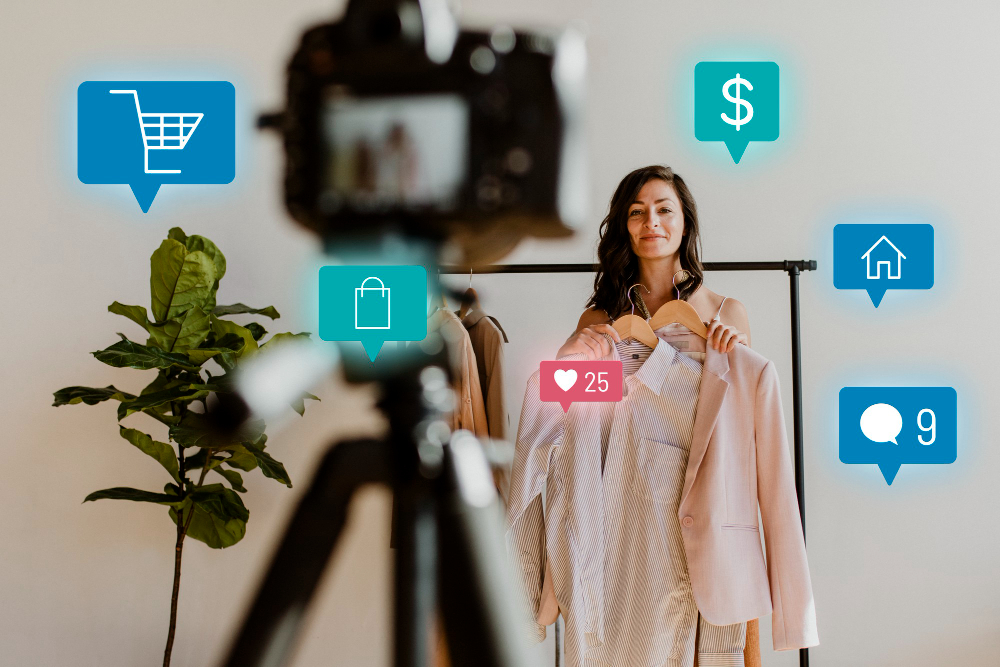
The fashion industry has always been driven by visuals, aspiration, and cultural influence. But in today's digital era, the power has shifted from traditional advertising to social media—where trends are born in seconds and buying decisions happen in real time. For modern consumers, discovering a brand on Instagram or TikTok is often the first step before visiting a website or store. This means social media isn’t just a place to “post content”—it’s now the most important revenue-driving engine for fashion brands.
Yet, many brands still struggle to transform their presence into conversions. They post inconsistently, follow outdated trends, or treat social media as a gallery rather than a strategic growth channel. As someone who has spent more than a decade helping fashion brands build social ecosystems that convert, I can confidently say: real results come from intentionality, systems, and consistency—not aesthetics alone.
In this blog, you’ll learn the exact strategies high-performance fashion brands use today: how to build a strong content foundation, implement an effective Instagram growth strategy, produce fashion content that sells, and create a community that fuels long-term growth.
Fashion consumers don’t shop through ads alone—they shop through identity, inspiration, and social validation. Social media brings all of this into one ecosystem. It’s where customers discover new styles, watch try-ons, compare looks, and trust real people wearing your pieces.
Instagram, TikTok, and Pinterest aren’t just social channels—they’re the new storefronts. A strong presence here directly impacts:
A weak presence means losing visibility in the most important shopping journey stage.
Fashion thrives on trust. Customers want to see real people wearing your items, how they fit, and how they style them. UGC, reviews, creator videos, and customer photos dramatically boost conversion rates.
Seasonality, micro-trends, and cultural shifts happen fast. Brands that manage social media properly stay relevant; those that don’t fall behind.
Before you think about scaling, you must nail your fundamentals.
A fashion brand is judged within seconds. Your visuals, tone, color palette, and styling must communicate who you are and who you’re for. Consistency is crucial. When a customer recognizes your content instantly, you’ve built true brand equity.
Fashion consumers fall into micro-communities—minimalists, streetwear lovers, luxury buyers, Y2K-inspired shoppers, athleisure fans, etc.
Your fashion content should match their:
Fashion is emotional. Understanding that emotion is what turns viewers into buyers.
Not every platform serves the same purpose:
Choose platforms based on your resources and goals—not trends.
Instagram remains the number-one platform for fashion brands because it balances aesthetic storytelling with powerful conversion tools. Here’s how to build a strategy that drives consistent growth.
Your profile must act like a mini-website. This includes:
You have 3 seconds to make someone care—optimize them well.
To grow and convert, rotate between these four content types:
Product demos, try-ons, styling videos, and detail close-ups. This content should reduce buyer hesitation and increase confidence.
Customer spotlights, UGC, testimonial videos, restock requests, Q&A stories.
This builds trust and loyalty.
Trend-related reels, seasonal references, memes, fashion moments.
This increases reach and virality.
Press mentions, influencer tags, behind-the-scenes production, founder storytelling.
This positions you as a serious brand.
To grow consistently:
Instagram rewards content that keeps people engaged.
Hashtags still help visibility—especially niche ones like:
Keywords in captions and alt text boost search visibility on Instagram’s new discovery features.
Tag your products in feed posts, Reels, and Stories.
Shoppable content drastically improves conversion rates by reducing clicks needed to purchase.
Also read: How to Use Social Media Marketing for eCommerce?
The first 3–7 seconds matter.
Your hooks should:
best formats include:
These formats balance aesthetic appeal with practical value.
Studio shoots are great for brand identity—but UGC is what converts. It’s real, relatable, and trustworthy.
Best UGC formats:
Encourage creators to show personality rather than polish.
Your Reels strategy should balance:
This balance ensures you grow while still driving sales.
Static posts aren’t dead—carousels in fashion perform extremely well.
Use them for:
Stories convert warm followers because the content feels personal and direct.
Use stories for:
Live try-ons and Q&A sessions dramatically increase trust and conversions. They create real-time buying urgency.
Few brands talk about it, but community is the real engine behind sustainable growth. Fashion is identity-driven; people want to belong.
Fashion brands with strong communities benefit from:
Try these high-impact tactics:
Ask customers what they want—colors, styles, features.
Brands that take feedback seriously see higher repeat purchase rates.
Influencers are essential for fashion. But the key isn’t working with those who have the biggest following—it’s about relevance.
Micro creators (5k–50k followers) often outperform big influencers because they’re more relatable and authentic.
The best performing formats:
Once you acquire usage rights, repurpose influencer content across:
This multiplies your ROI.
Running ads without creative testing is the fastest way to waste money.
Instead, start with organic data.
Not every post is built for conversion. Boosting a post because it “looked good” rarely works. Instead, boost content that already performs naturally.
Look for posts with:
Then create variations and test different hooks, captions, and lengths.
Use retargeting ads for:
Add social proof to retargeting creatives to close more sales.
Track KPIs that align with real business goals—not vanity metrics.
Avoid these pitfalls if you want to grow faster:
Social media has become the most powerful conversion engine for fashion brands. Those who succeed are not the ones posting randomly—they are the ones who build systems, understand their audience, create high-performing fashion content, and implement a strong Instagram growth strategy.
As social media continues to evolve, one thing remains the same: consumers want authenticity, relevance, and trust. If your brand can deliver this consistently—through engaging content, strategic community building, and intelligent optimization—you’ll not only grow your audience but also turn followers into loyal customers.
Now is the time to treat social media as a revenue channel, not just a branding tool. The brands that master this today will dominate tomorrow.
Instagram and TikTok lead the fashion industry. Instagram is best for conversions, while TikTok excels at discovery and virality.
For consistent growth, aim for 3–5 Reels per week, 1–2 carousels, daily Stories, and weekly community engagement.
Try-ons, UGC, styling tutorials, and detailed product demos outperform polished studio content when it comes to conversions.
Yes, but not necessarily big influencers. Micro-creators often provide higher engagement and authenticity.
Track link clicks, product tag interactions, ROAS, saves, shares, and repeat purchase behavior. These metrics indicate real business impact—not vanity numbers.
